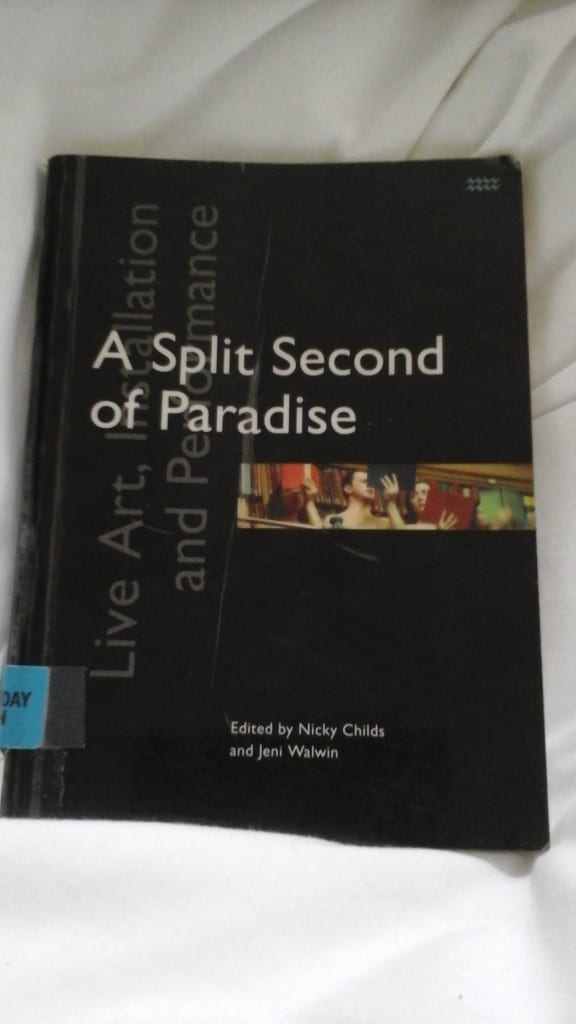In this blog post I am going to be talking about The Wooster Group, but in later blog post I’m also going to be referring to other specific artist written about in this book, ‘A Spilt Second of Paradise: Live Art, Installations and Performances.’ As I update I will leave links to all these future posts about my thoughts on this book at the end of this blog.
xxx
Reading through the second introduction of the book ‘A Split Second of Paradise’ by Nicky Childs and Jeni Walwin, ‘Valuable Spaces New Performance in the 1990s’ by Tim Etchells, I discovered areas of overlap between the performances mentioned and our own production of ‘The Surviving Fragments of the Rumour Room’.
Take, for example, this description of The Wooster Group working process.
The group’s work, in many cases built in response to documentary materials – source texts, video and audio tapes – could be seen as a strange kind of witnessing too, to the lives of the company (including as autobiographical fragments as tiny shards and clues in the work) and to the history and culture which the group has lived through or dwelled upon (Etchells, 1998, 35).
The note of documentation through the process of devising is a key theme in our work. Although we are focusing on the “The Room Upstairs” and not our own personal experience, we are both simultaneously, finding documents about the room (via stories, written evidence, and personal experience) and documenting our finding and process (via audio, video, written and of course the performance itself).
Etchells writing in response to their work also seems to highlight what we want our audience to get out of our performance.
It has seemed that performance itself is both the memory and the chronicler of what might otherwise pass unrecorded or unnoticed in a broad public forum,… in which connections between personal history and the broader sweeps of cultural life can be mapped and documented, a space in which the identity itself can be kicked over, played with, reinvented. (Etchells, 1998, 37)
We want to highlight this room’s history, play with the human concept of time, and show how much, or indeed how little, we know about events that happened there only seventy years previous. Highlight the personal history (of us as performers), the mundane history (of day to day events), the social history (of how it was used by the public) and the larger events that affected people’s lives. We want to reinvent this room for the audience, making them think about the history of this space as something vast, rather than just a place they go to be entertained.
Our process of creating site specific art seems to take inspiration form the devising process of The Wooster Group. Its wants, as described by Etchells, seem to mirror that of our own, and I hope in moving forward in this final month of the devising process we can gain more inspiration and learn from them.
Xxx
Work Cited.
Etchells, Tim (1998) Valuable Spaces New Performance in the 1990. In: Nicky Childs and Jeni Walwin (eds.) A Spilt Second of Paradise: Live Art, Installations and Performances. London: Rivers Oram Press, 31-40.
xxx
Other blogs in this series
What is site specific performance?
Other thoughts on ‘A Spilt Second of Paradise: Live Art, Installations and Performances.’ Coming Soon…
